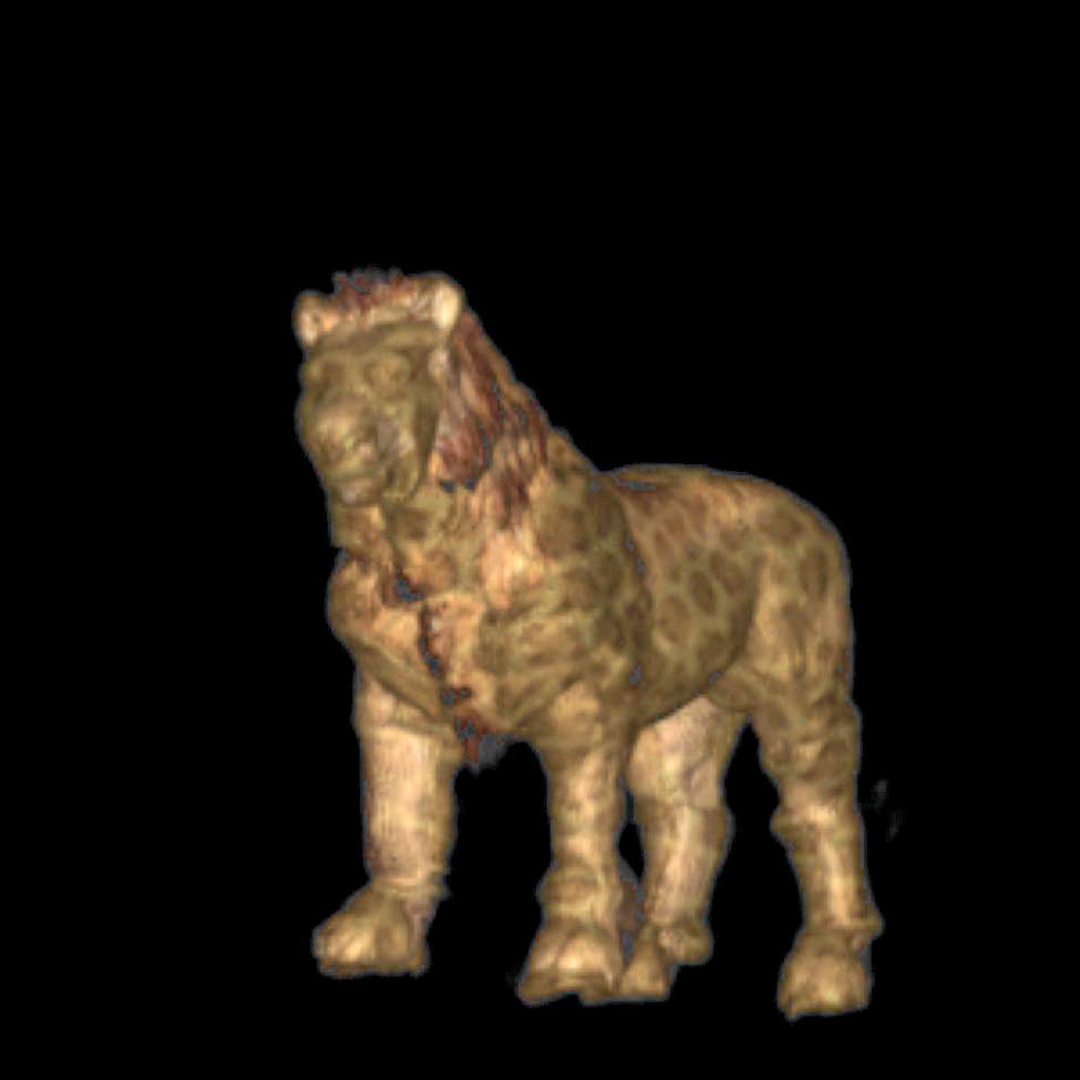“Feature-based volume metamorphosis” by Lerios, Garfinkle and Levoy
Conference:
Type(s):
Title:
- Feature-based volume metamorphosis
Presenter(s)/Author(s):
Abstract:
Image metamorphosis, or image morphing, is a popular technique for creating a smooth transition between two images. For synthetic images, transforming and rendering the underlying three-dimensional (3D) models has a number of advantages over morphing between two pre-rendered images. In this paper we consider 3D metamorphosis applied to volume-based representations of objects. We discuss the issues which arise in volume morphing and present a method for creating morphs. Our morphing method has two components: first a warping of the two input volumes, then a blending of the resulting warped volumes. The warping component, an extension of Beier and Neely’s image warping technique to 3D, is feature-based and allows fine user control, thus ensuring realistic looking intermediate objects. In addition, our warping method is amenable to an efficient approximation which gives a 50 times speedup and is computable to arbitrary accuracy. Also, our technique corrects the ghosting problem present in Beier and Neely’s technique. The second component of the morphing process, blending, is also under user control; this guarantees smooth transitions in the renderings.
References:
1. T. Beier and S. Neely. Pacific Data Images. Personal communication.
2. T. Beier and S. Neely. Feature-based image metamorphosis. In Computer Graphics, vo126(2), pp 35-42, New York, NY, July 1992. Proceedings of SIGGRAPH ’92.
3. B. R Bergeron. Morphing as a means of generating variation in visual medical teaching materials. Computers in Biology and Medicine, 24( 1 ): 11-18, Jan. 1994.
4. B. Cabral, N. Cam, and J. Foran. Accelerated volume rendering and tomographic reconstruction using texture mapping hardware. In A. Kaufman and W. Krueger, editors, P1vceedings of the 1994 Symposium on Volume Visualization, pp 91-98, New York, NY, Oct. 1994. ACM SIGGRAPH and IEEE Computer Society.
5. M. Chen, M. W. Jones, and R Townsend. Methods for volume metamorphosis. To appear in Image P~vcessing for Broadcast and Video P~vduction, Y. Paker and S. Wilbur editors, Springer-Verlag, London, 1995.
6. M. Covell and M. Withgott. Spanning the gap between motion estimation and morphing. In P1vceedings of IEEE International Conference on Acoustics, Speech and Signal P1vcessing, vol 5, pp 213-216, New York, NY, 1994. IEEE.
7. T.A. Galyean and J. F. Hughes. Sculpting: An interactive volumetric modeling technique. In Computer Graphics, vo125(4), pp 267-274, New York, NY, July 1991. Proceedings of SIGGRAPH ’91.
8. T. He, S. Wang, and A. Kaufman. Wavelet-based volume morphing. In D. Bergeron and A. Kaufman, editors, P~vceedings of Visualization ’94, pp 85-91, Los Alamitos, CA, Oct. 1994. IEEE Computer Society and ACM SIGGRAPH.
9. J. F. Hughes. Scheduled Fourier volume morphing. In Computer Graphics, vol 26(2), pp 43-46, New York, NY, July 1992. Proceedings of SIGGRAPH ’92.
10. A. Kaufman, D. Cohen, and R. Yagel. Volume graphics. Computer, 26(7):51-64, July 1993.
11. A. Kaul and J. Rossignac. Solid-interpolating deformations: Construction and animation of PIPs. In F. H. Post and W. Barth, editors, Eurographics ’91, pp 493-505, Amsterdam, The Netherlands, Sept. 1991. Eurographics Association, North-Holland.
12. J.R. Kent, W. E. Carlson, and R. E. Parent. Shape transformation for polyhedral objects. In Computer Graphics, vo126(2), pp 47-54, New York, NY, July 1992. Proceedings of SIGGRAPH ’92.
13. R Litwinowicz. Efficient techniques for interactive texture placement. In Computer Graphics Proceedings, Annual Conference Series, pp 119-122, New York, NY, July 1994. Conference Proceedings of SIGGRAPH ’94.
14. W. E. Lorensen and H. E. Cline. Marching cubes: A high resolution 3-D surface construction algorithm. In Computer Graphics, vol 21 (4), pp 163-169, New York, NY, July 1987. Proceedings of SIGGRAPH ’87.
15. K. Perlin and E. M. Hoffert. Hypertexture. In Computer Graphics, vo123(3), pp 253-262, New York, NY, July 1989. Proceedings of SIGGRAPH ’89.
16. T.W. Sedeberg, R Gao, G. Wang, and H. Mu. 2-D shape blending: An intrinsic solution to the vertex path problem. In Computer Graphics P~vceedings, Annual Conference Series, pp 15-18, New York, NY, Aug. 1993. Conference Proceedings of SIGGRAPH ’93.
17. T.W. Sederberg and S. R. Parry. Free-form deformations of solid geometric models. In Computer Graphics, vo120(4), pp 151-160, New York, NY, Aug. 1986. Proceedings of SIGGRAPH ’86.
18. R A. van den Elsen, E.-J. D. Pol, and M. A. Viergever. Medical image matching — a review with classification. IEEE Engineering in Medicine and Biology Magazine, 12(1):26-39, Mar. 1993.
19. S.W. Wang and A. Kaufman. Volume sculpting. InP1vceedings of 1995 Symposium on Interactive 3D Graphics, pp 151-156,214, New York, NY, Apr. 1995. ACM SIGGRAPH.
20. S.W. Wang and A. E. Kaufman. Volume sampled voxelization of geometric primitives. In G. M. Nielson and D. Bergeron, editors, P~vceedings of Visualization ’93, pp 78-84, Los Alamitos, CA, Oct. 1993. IEEE Computer Society and ACM SIGGRAPH.
21. G. Wolberg. Digital Image Warping. IEEE Computer Society R, Los Alamitos, CA, 1990.




